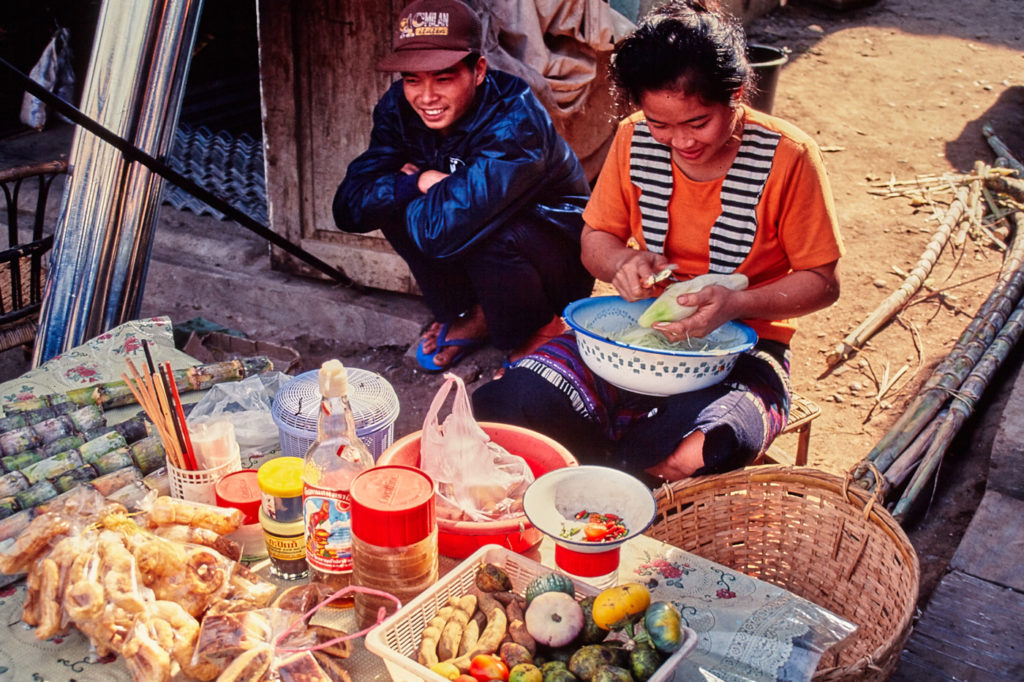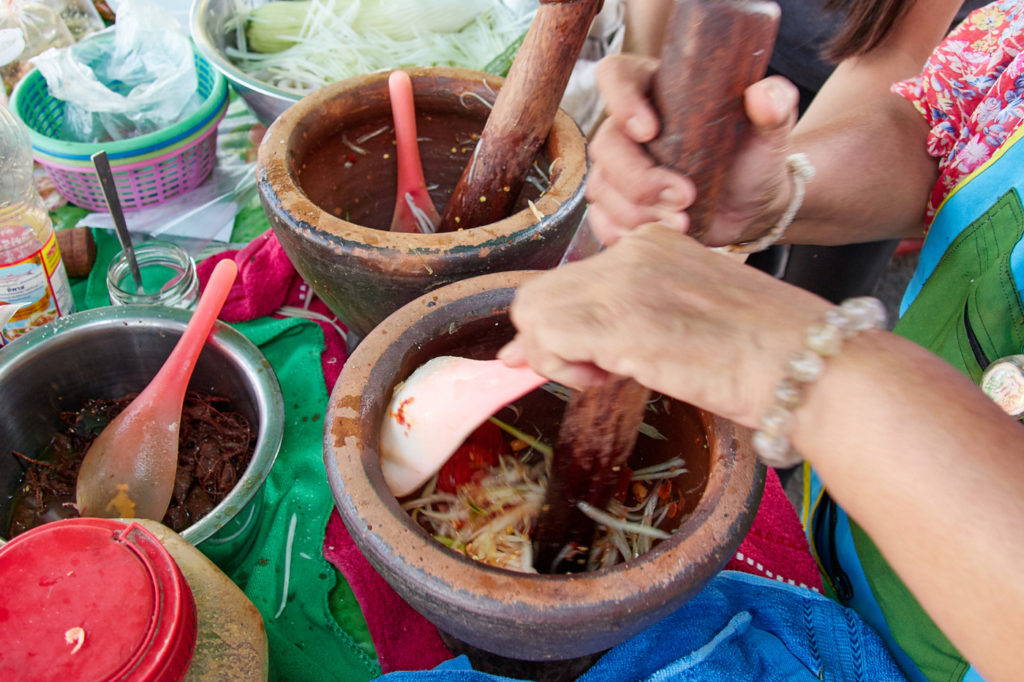Som tam: Some like it hotter

Som tam: Some like it hotter
I asked the internet what the national dish of Thailand was, it came up with Pad Thai. It is pleasant enough to eat but are fried noodles really a country-defining dish, I wondered. So I asked it what was the most popular dish in Thailand and it offered up a few lists. On the first list I looked at it gave tom yum goong as the number one. The spicy, sour prawn soup which a review I once read described as “like being smashed in the face with a shovel and dragged off to ecstasy.” Second on that list was the green papaya salad known as som tam, a dish that could easily draw the same emotion.
Tom yum is without doubt one of the classics of Thai cuisine but if it were based on the amount consumed I would wager that som tam is by far and away the number one. Every neighbourhood or food court in the country has a som tam vendor. According to my Thai friends som tam vendors are also the best sources of neighbourhood gossip because … well, everyone eats som tam.
The origins of the dish are unclear but it is generally accepted to have evolved somewhere in Laos or the Isaan region in north east of Thailand. Many of the ingredients such as papaya, tomatoes and chilli were not native to the region. They arrived at the seaports of Southeast Asia along with European traders during the 15th and 16th centuries. Their cultivation spread rapidly but it was the Lao who first developed a deep affection for chillies.

Som tam vendor in Luang Prabang, Laos in the late 1980s. The basket in the foreground shows various eggplants, hog plums and tamarind that can be used plus numerous crispy snacks such as pork rind that can be enjoyed with it.
The dish combines all five of the essential flavours of Thai cuisine; spicy, sour, sweet, salty and bitter. The key ingredients are shredded green papaya, chillies, lime, tomato, fermented fish sauce and palm sugar. The lime and the chili make up the dominant flavours. In its original form, fermented fish paste was used. This variation is still popular in its homelands but tends to be a little overpowering for non-natives. The ingredients are pounded together with mortar and pestle rupturing the plant cells and allowing the flavours to merge and deepen.
Back in those early days borders were constantly shifting and though recipes were passed on by word of mouth som tam didn’t make its way into what is now central and southern Thailand until much later. Change came with the opening of the final stretch of the Northeastern Railway in 1958 and the building of the Mittraphap Road between 1955-1957. Both of which connected Nong Khai, on the Thai-Laos border, with Nakhon Ratchasima (Korat). As rural people began to migrate south they brought their cuisines with them.
More neat eats around Asia here
The trickle became a flood at the end of the Vietnam War when an estimated 200,000 Lao refugees crossed the Mekong River into Thailand. Many of them moved to Bangkok to find work and many others moved there to feed them. Once in Bangkok the dish evolved again exchanging the pungent fish paste for fish sauce and making the quantity of chillies variable according to taste.
These days som tam has found its way onto many restaurant menus but it is first and foremost a street food dish. Preparing it, getting the balance of flavours just right, is an art and connoisseurs will wax lyrical about their favourite vendors.
Restaurants usually serve a toned-down som tam Thai, the basic ingredients augmented with green beans and garnished with crushed peanuts and tiny dried shrimp. Some restaurants have even added exotic variations where the papaya is swapped for unripe mango, pomelo or green banana.

Mixing up a som tam Thai in Bangkok
My local som tam lady prepares it several ways. The familiar som tam Thai is my go-to variation but she also makes the Isaan variation with field crab and fish paste called som tam boo and at least one other version featuring cucumber in place of papaya.
Som tam is often served with grilled or barbecued chicken and sticky rice. It is mostly fat-free, and averages around 210 calories and 444 mg of potassium in a typical serving. The dish is rich in vitamins A and C. It is rare that something that tastes so good is actually quite healthy. Which reminds me, I think it must be lunchtime.
do you know what might make a somtam sauce redish in colour like in your pic…that’s not from the chillies?
Hi Janie, most of the red colour would come from the juice of the tomatoes which are pounded along with the chillies.